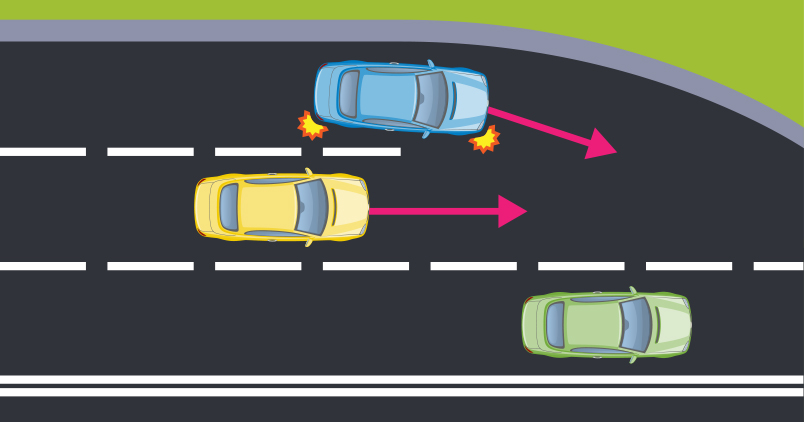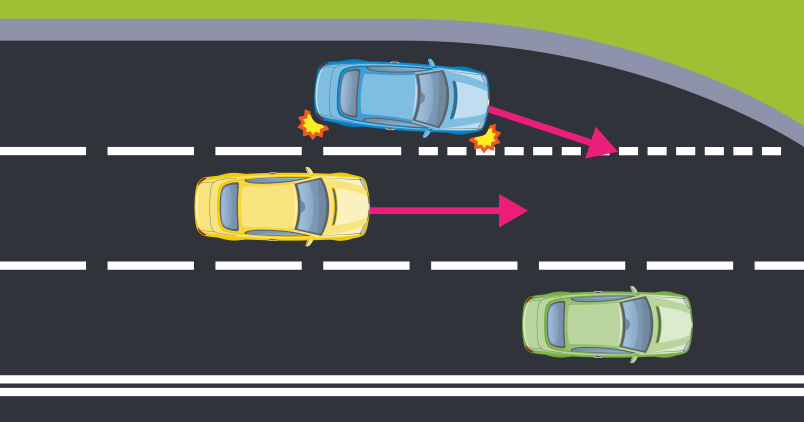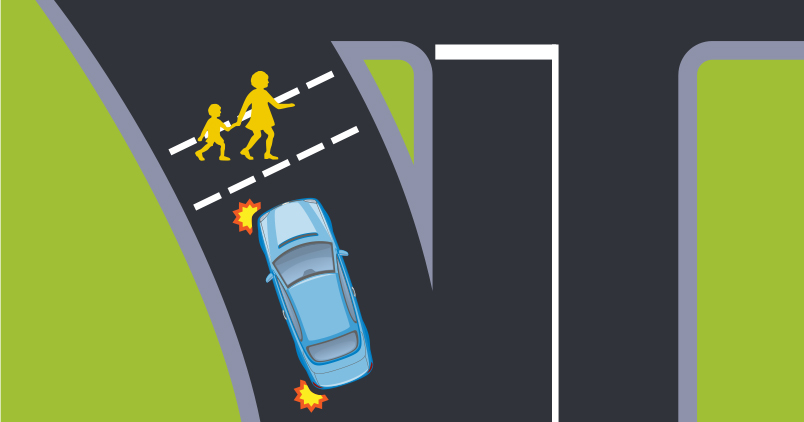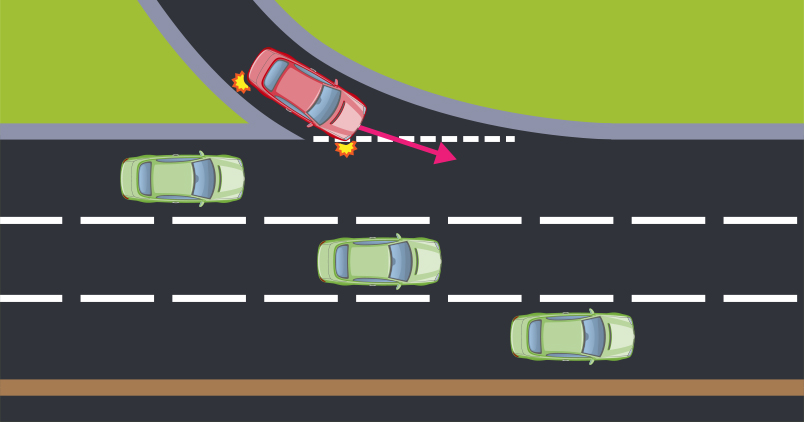5 merging mistakes drivers make
Posted 14 December, 2017
Lauren Ferrone

Whether you’re courteous or impatient when another car’s trying to edge its way in front of you, here are five merging mistakes to avoid.
1. Not knowing the difference between a zip merge and a lane change
When two lanes become one without a line marking between them (pictured below), who gives way?
In these cases, one lane is coming to an end, and drivers mistakenly assume that cars in the left lane always need to give way to the right. But that’s actually not the case.

This is a zip merge, and you need to give way to drivers that have any part of their car ahead of yours. So in the diagram above, the yellow car needs to give way to the blue car.
Drivers seem to get this one confused with a lane change (pictured below).
Here, the blue car has to cross a broken line to get to the other lane, so needs to give way to all traffic in that lane, including the yellow car, before moving over. The driver might need to stop and wait until there’s a safe gap.
 How to avoid a merging mishap:
How to avoid a merging mishap: They might look similar, but a lane change and a zip merge are different. If you have to cross a white line (i.e. a lane change), give way to all traffic in the lane you’re about to enter. If the white line ends before the lanes merge (i.e. a zip merge), give way to any car that’s in front of you.
2. Speeding up to get in front
Back to the zip merge for a moment… while you have to give way to any car in front, drivers shouldn’t speed up to get ahead.
How often do you see one car flying to get in front before the lane ends?
It’s not only frustrating, but drivers need to remember that all road-users are required to drive with due care and attention, and avoid crashes if they can.
How to avoid a merging mishap: Ease off the accelerator and cars should naturally flow in front of each other one by one like a zipper.
3. Failing to give way to pedestrians and cyclists when turning left from a slip lane
All too often pedestrians step out onto a slip lane to cross the road, but quickly step back because a motorist hasn’t seen them.
Remember, if a pedestrian or cyclist is waiting on the edge of the road about to cross a slip lane, motorists must stop and give way before turning left.
How to avoid a merging mishap: Before merging, try to make eye contact with pedestrians and cyclists about to cross slip lanes so you’re aware of each other’s intentions.

4. Not merging properly on a freeway
Merging can be even trickier when you’re travelling at high speeds.
So, what’s the rule? In most situations, you’ll need to cross a broken white line to enter (see picture below) so you’ll need to give way to all cars already on the freeway, even if that means coming to a stop.
It’s a good idea to stay back while you’re waiting to enter so you have enough time to build up some speed before merging.
If you’re already on the freeway, you don’t need to slow down for these newcomers, but it’s courteous to make room for them if you can and if it’s safe to do so.
How to avoid a merging mishap: If you’re trying to enter a freeway, wait for a safe gap. Already on the freeway? Then help out other drivers by giving them space to enter if it’s safe.

5. The part lane change
What about the part lane-change… you know, where a driver creeps out into the adjacent lane to get around an obstruction (a parked car for example)?
Even if you’re only partly moving into a lane for a few seconds, you still need to indicate and give way to cars in that lane.
How to avoid a merging mishap: Don’t forget to indicate before you merge, rather than flicking your blinker on when you’re part way through the manoeuvre.
 Whether you’re courteous or impatient when another car’s trying to edge its way in front of you, here are five merging mistakes to avoid.
Whether you’re courteous or impatient when another car’s trying to edge its way in front of you, here are five merging mistakes to avoid.
 This is a zip merge, and you need to give way to drivers that have any part of their car ahead of yours. So in the diagram above, the yellow car needs to give way to the blue car.
Drivers seem to get this one confused with a lane change (pictured below).
Here, the blue car has to cross a broken line to get to the other lane, so needs to give way to all traffic in that lane, including the yellow car, before moving over. The driver might need to stop and wait until there’s a safe gap.
This is a zip merge, and you need to give way to drivers that have any part of their car ahead of yours. So in the diagram above, the yellow car needs to give way to the blue car.
Drivers seem to get this one confused with a lane change (pictured below).
Here, the blue car has to cross a broken line to get to the other lane, so needs to give way to all traffic in that lane, including the yellow car, before moving over. The driver might need to stop and wait until there’s a safe gap.
 How to avoid a merging mishap: They might look similar, but a lane change and a zip merge are different. If you have to cross a white line (i.e. a lane change), give way to all traffic in the lane you’re about to enter. If the white line ends before the lanes merge (i.e. a zip merge), give way to any car that’s in front of you.
How to avoid a merging mishap: They might look similar, but a lane change and a zip merge are different. If you have to cross a white line (i.e. a lane change), give way to all traffic in the lane you’re about to enter. If the white line ends before the lanes merge (i.e. a zip merge), give way to any car that’s in front of you.



